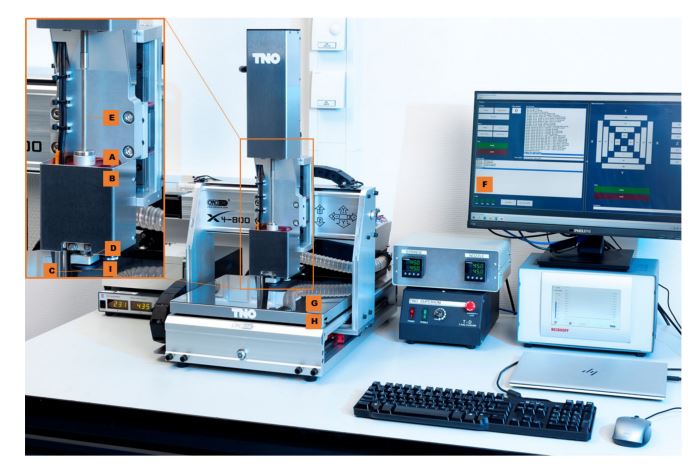The Quest for Child-Friendly Carrier Materials Used in the 3D Semi-Solid Extrusion Printing of Medicines

This work gives a brief overview of carrier materials currently used in pharmaceutical studies on the three-dimensional (3D) semi-solid extrusion (SSE) printing of medicines for pediatrics. The suitability of using these carrier materials in pediatric formulations, concerning safety and toxicity, was reviewed by consulting the ‘Safety & Toxicity of Excipients for Pediatrics’ (STEP) database and the Food and Drug Administration (FDA) regulations.
In the second part of this work, carrier materials were tested on their ability to form a semi-solid mixture with lactose by dual asymmetric centrifugation (DAC) and printing by SSE. With the combination of theoretical and experimental studies, this work will guide research toward grounded decision-making when it comes to carrier material selection for pharmaceutical pediatric 3D SSE printing formulations.
Table 1. Carrier material selection from the literature. (just an excerpt)
| Carrier Material | Melting or Glass Transition Temperature (◦C) | Pharmaceutical Considerations |
| Polymers | ||
| Methacrylate-Copolymers (Eudragit) |
54 (Tg) (Eudragit® EPO) 63 (Tg) (Eudragit RL®) 64 (Tg) (Eudragit RS®) |
• Different release profiles (sustained release, enteric), based on grade. • Wide applicability in the pharmaceutical industry |
| Poloxamer 407 | 52–57 (Tm) [21] | • Used in soft capsules, tablets, and suspensions [22] • Complete drug release within 2 h [23] |
| Polyethylene glycol (PEG) Mn 4000/6000 |
50–58 (Tm) [21] | • Complete and fast-release profile [24] |
| Fats | ||
| Adeps solidus (Witepsol®) | 30–45 (Tm) [21] | • Low melting point (storage conditions) • Used in suppositories |
| Glycerol dibehenate (Compritol®) |
65–77 (Tm) [21] | • Slow and incomplete release profile • Dissolution profile alters over time [16] |
| Glycerol distearate (Precirol® AT05) |
50–60 (Tm) [45] | • Slow and incomplete release profile |
| Glycerol monostearate (Geleol™) |
54–64 (Tm) [47] 55–60 (Tm) [21] |
• Slow and incomplete release profile [16] • Dissolution profile alters over time [16] |
| Gelling agents | ||
| Carboxymethylcellulose (CMC) | 60–80 (solid-gel) [48] | • Water-soluble, anionic cellulose-derivative [49] • Biocompatible |
| Carrageenan | 40–60 (solid-gel conversion) [51] |
• High molecular weight polysaccharide [52] |
| Gelatin | 22–26 (solid-gel conversion) [54] |
• Biocompatible polymer [55] • Thermo-reversible gelation |
| Hydroxypropyl methylcellulose (Hypromellose, (HPMC)) |
55–77 (solid-gel) [57] | • Safe biopolymer [58] • Sustained release profile [59] • Thermo-reversible gelation [58] |
| Other | ||
| Lauroyl Polyoxyl-32 glycerides (Gelucire® 44/14) |
42.5–47.5 ™ | • High Hydrophilic-Lipophilic Balance (HLB) • Enhances the solubility of hydrophobic APIs [75] • Tablets can be considered conventional-release tablets [9] |
| Polyoxyl-32 stearate (type I) NF (Gelucire® 48/16) |
46–50 ™ | |
| Stearoyl polyoxyl-32 glycerides (Gelucire® 50/13) |
46–51(Tm) | |
Download the full article as PDF here The Quest for Child-Friendly Carrier Materials Used in the 3D Semi-Solid Extrusion Printing of Medicines
or read it here
Excipients mentioned in the study: Eudragit EPO, Eudragit RL, Eudragit RS, Poloxamer 407, PEG, PLGA, PVP K12, Compritol, Precirol ATO 05, Geleol, Gelatin, HPMC, Starch, Xanthan gum, Gelucire 44/14, Gelucire 48/16, Gelucire 50/13
van Kampen, E.E.M.; Ayyoubi, S.; Willemsteijn, L.; van Bommel, K.J.C.; Ruijgrok, E.J. The Quest for Child-Friendly Carrier Materials Used in the 3D Semi-Solid Extrusion Printing of Medicines. Pharmaceutics 2023, 15, 28. https://doi.org/10.3390/pharmaceutics15010028

